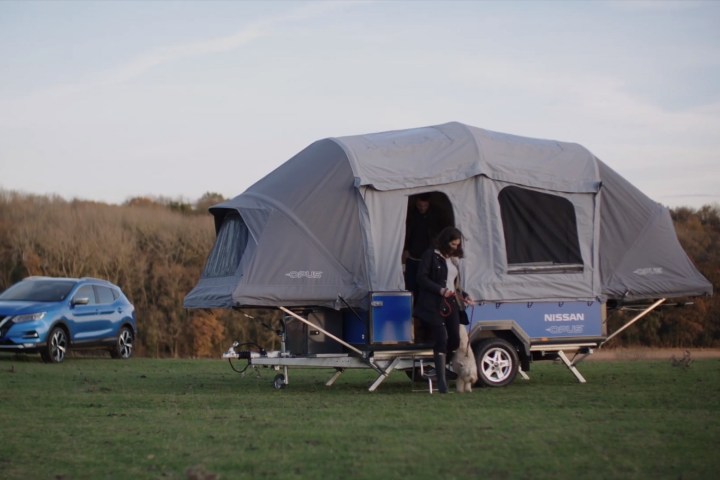
Nissan has partially solved the problem of recycling the battery packs used to power electric cars. The Japanese firm teamed up with trailer manufacturer Opus to develop a portable, weather-resistant power pack that prolongs the life of first-generation Leaf batteries while keeping tech-savvy adventurers juiced up off the grid.
Called Roam, the pack takes the form of a rectangular device that’s smaller than a carry-on suitcase. Cracking it open reveals lithium-ion cells sourced from the battery packs of first-generation Leaf electric cars that have reached the end of their life cycle. These cells give the Roam a storage capacity of 700Wh, which is enough power for about a week’s worth of use.
The Roam keeps mobile devices and other portable accessories charged, even if the nearest plug outlet is 100 miles away. Its flap hides a pair of outlets, four USB ports, and a lone USB-C port for faster charging. Nissan explained its partnership with Opus gives the Roam the ability to inflate a six-person Air trailer in a matter of minutes. It also powers the trailer’s mobile Wi-Fi feature and Bluetooth sound system, and it feeds electricity to the on-board, 12-volt battery.
Campers have several ways to recharge the pack, including at least one that’s sustainable. The Roam is compatible with an available 400-watt solar panel that fully recharges its pack in two to four hours. This is the most practical solution, because it lets users charge the Roam right where they parked, and Nissan factored two solar charges into the week-long range it quoted. Those camping in an area where sunlight is rare will need to charge the Roam by plugging it into a standard, 230-volt outlet and waiting for about an hour. Depending on the location, this solution might require hauling it closer to something resembling civilization.
The Opus-compatible Nissan Roam will go on sale in select European markets in 2019. Pricing hasn’t been announced yet, and we don’t know whether it will be offered in the United States. Opus distributes some of its products in America, and Nissan is certainly present here, so seeing the Roam on our shores is not out of the question. And, as early examples of the original Leaf approach the 10-year mark, we expect Nissan and other companies will continue to find creative, sustainable ways to recycle battery packs.



